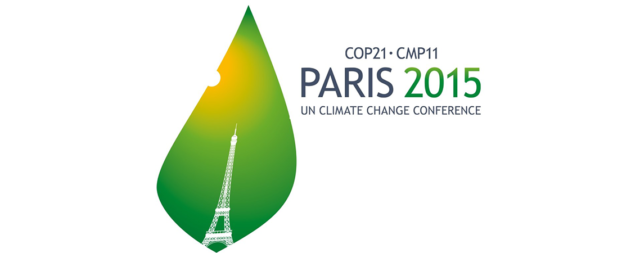Climate change, an ever-looming global emergency transcending national boundaries, has spurred international cooperation to address its dire implications. In a landmark move, world leaders convened at the UN Climate Change Conference (COP21) in Paris on December 12, 2015, and forged the historic Paris Agreement. This accord, a monumental milestone in environmental diplomacy, aims to combat climate change by limiting global temperature rise, with an emphasis on keeping it well below 2°C above pre-industrial levels and striving to cap it at 1.5°C. Such measures, as outlined in the agreement, hold the promise of significantly mitigating the risks and impacts of climate change on a global scale. The Paris Agreement stands as a testament to the collective resolve of nations to confront the existential threat of climate change through coordinated, multilateral action. Enshrined within its provisions are ambitious targets, robust mechanisms for accountability, and a commitment to equitable, sustainable development for all. At its core, the Agreement embodies a paradigm shift towards a net-zero emissions future, bolstered by the principles of climate justice and intergenerational equity.
Central to the agreement’s efficacy is its recognition of the principle of common but differentiated responsibilities and respective capabilities (CBDR-RC). Acknowledging the historical contributions of developed nations to greenhouse gas emissions and their disproportionate impact on vulnerable populations, the agreement emphasizes the need for differentiated commitments tailored to each country’s unique circumstances. This principle underpins the framework for Nationally Determined Contributions (NDCs), whereby nations outline their individual targets and strategies for reducing emissions and enhancing resilience.
Crucially, the Paris Agreement fosters a culture of transparency and accountability, essential for building trust and fostering international cooperation. Through robust monitoring, reporting, and verification mechanisms, countries are held accountable for their commitments, ensuring that collective action remains aligned with the overarching goal of limiting global temperature rise. Moreover, the Agreement stipulates a five-year cycle for revisiting and enhancing NDCs, providing opportunities for nations to ramp up ambition and adapt to evolving scientific knowledge and technological advancements.
Currently, the world teeters at approximately 1.1°C above pre-industrial levels, with each successive decade witnessing escalating temperatures, a stark testament to the urgency of action. The tangible consequences of this warming are felt worldwide, from devastating floods in China and Western Europe to deadly heatwaves in the Pacific Northwest. The presence of climate change looms large, imperilling ecosystems, wildlife, and human livelihoods. The critical distinction between a 1.5°C and a 2°C temperature increase cannot be overstated. Scientists warn that crossing the 1.5°C threshold would unleash unprecedented and potentially irreversible climate impacts. Heatwaves, already occurring more frequently and with greater intensity, would become even more commonplace, exacerbating the risk of heat-related illnesses and fatalities. Furthermore, extreme rainfall events would heighten flood risks, while intensified evaporation would exacerbate drought conditions, imperilling water security and agricultural productivity.
Beyond mere meteorological concerns, the difference between a 1.5°C and 2°C rise holds profound implications for Earth’s delicate ecosystems. At 1.5°C, there remains hope of preserving crucial ice sheets in Greenland and West Antarctica, mitigating the risk of catastrophic sea-level rise. Conversely, surpassing the 2°C threshold could trigger irreversible ice sheet collapse, leading to a dramatic surge in sea levels, inundating coastlines, and submerging island nations and coastal cities beneath rising tides. Moreover, coral reefs, vital marine ecosystems teeming with biodiversity, face an existential threat. A 1.5°C increase would devastate a significant portion of coral reefs, yet at 2°C, the survival prospects for these fragile ecosystems are bleak, with more than 99% facing imminent demise. This loss not only imperils marine biodiversity but also undermines the livelihoods of communities reliant on reef ecosystems for sustenance and economic prosperity.
The implications extend far beyond environmental concerns, encompassing food security, public health, and socioeconomic stability. A 2°C rise would amplify the risk of crop failures, precipitating food shortages and price spikes, while expanding the habitat range of disease-carrying vectors such as mosquitoes. Additionally, ecosystems worldwide face the specter of collapse as biodiversity dwindles, exacerbating the risk of wildfires and further destabilizing fragile ecosystems.
Compounding these challenges are the ominous specters of tipping points, where Earth’s systems reach irreversible thresholds, triggering cascading environmental upheaval. The Amazon rainforest, a vital carbon sink, faces the possibility of collapse due to deforestation and climate-induced droughts, potentially unleashing vast stores of CO2 into the atmosphere. Similarly, thawing Arctic permafrost poses the risk of releasing substantial carbon emissions, perpetuating the cycle of climate change. Despite the gravity of these challenges, hope remains within reach. The Paris Agreement, buttressed by successive climate action plans and international cooperation, provides a blueprint for collective action to mitigate the worst impacts of climate change. However, urgent and decisive action is imperative to bridge the gap between current pledges and the ambitious targets outlined in the agreement. As nations convene to reassess their commitments and chart a course forward, the imperative of limiting global warming to 1.5°C looms large as a beacon of hope in the face of an uncertain future.









